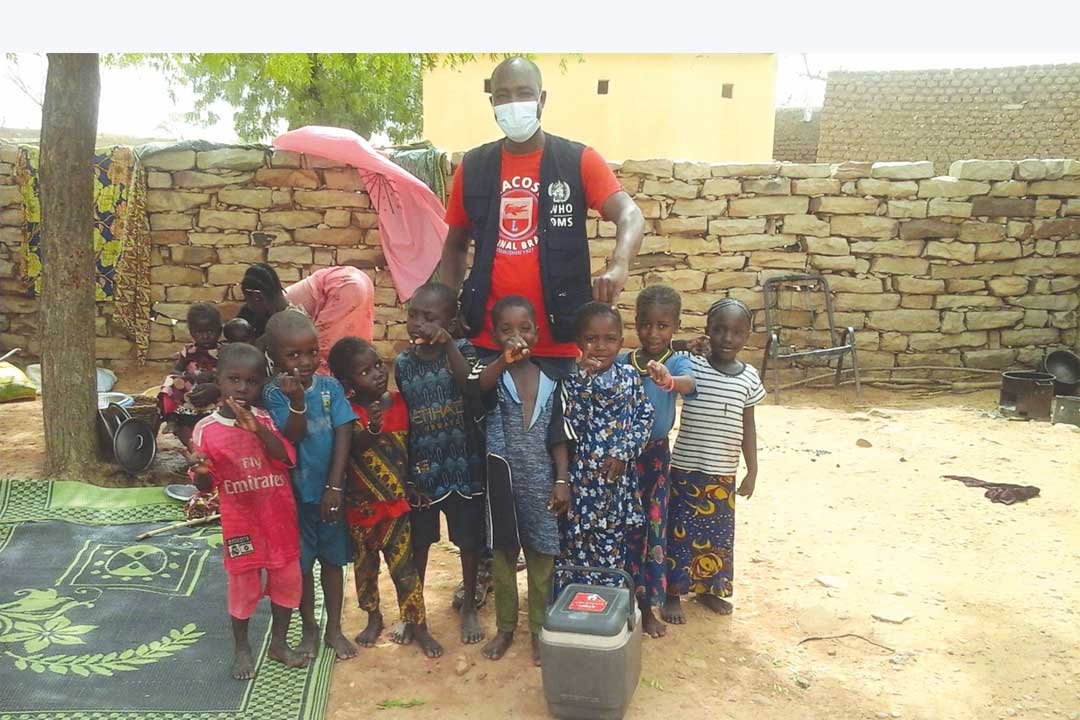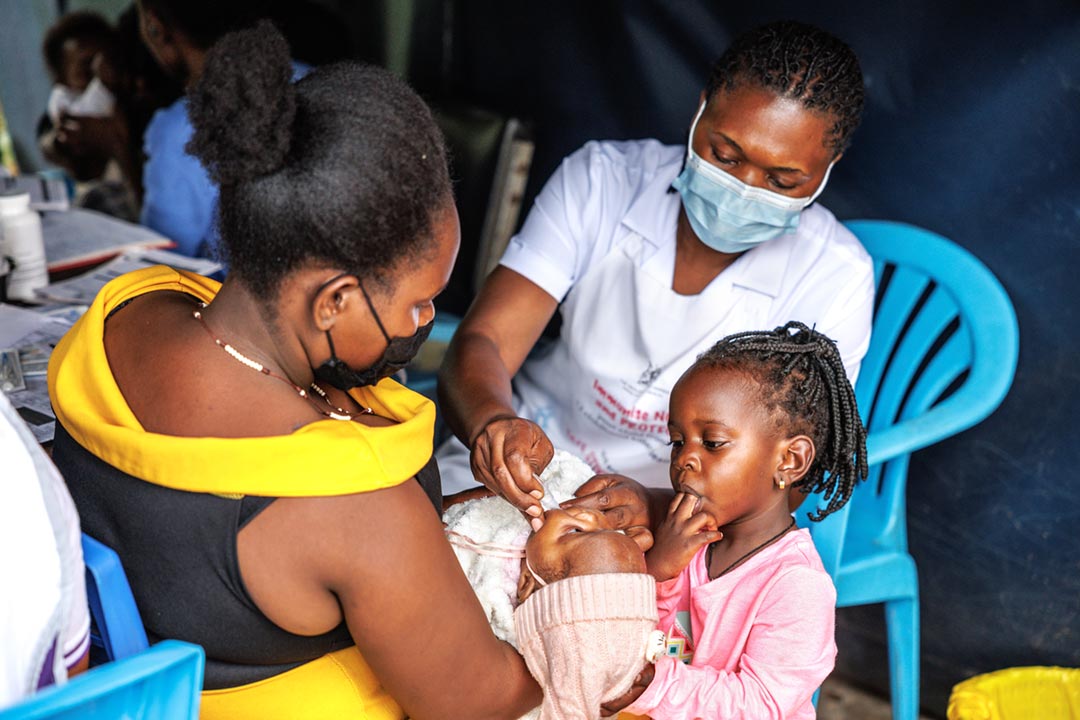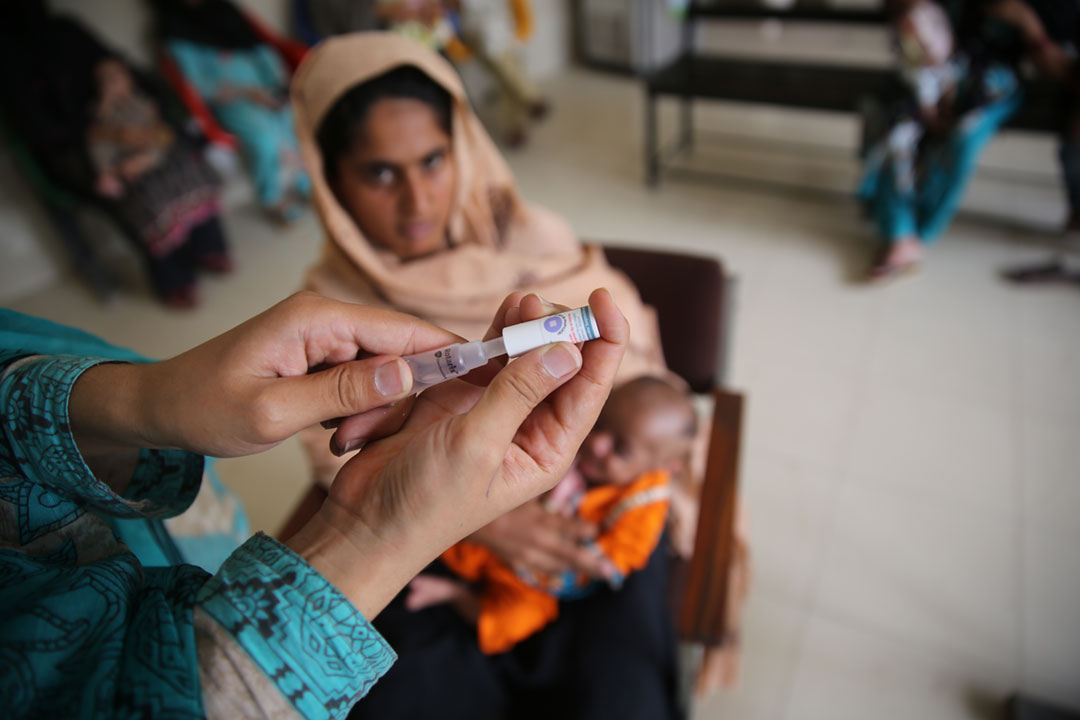Scientists in Kenya warn toxin in corn could increase the risk of cervical cancer
A new study highlights a link between aflatoxin exposure – already a proven risk factor for liver cancer – and persistent infection with the cancer-causing human papillomavirus.
- 28 March 2024
- 5 min read
- by Claudia Lacave

It's February on the premises of the International Livestock Research Institute (ILRI) on the outskirts of Nairobi. Outside, the weather is warm and the grass lush – a sharp contrast to the cool air conditioning and fluorescent lighting inside a facility building.
People in white coats criss-cross amid the hum of machinery; on one wall, a sign reading "Mycotoxin Analysis" spells out the lab's focus.
"Aflatoxins are indeed a concern. However, we don't overstate it, as we have regulations governing what's safe for human consumption. Our priority is mitigating the risks," says Florence Mutua, a food safety researcher at ILRI.
In Kenya, as in the majority of African countries, maize is a staple food, with consumption estimated at 400g per person per day, significantly increasing the population’s exposure to the toxin.
Aflatoxins are naturally occurring toxins found in moulds that affect a wide range of food crops, primarily in South-east Asia and sub-Saharan Africa. While they're known to cause cases of liver cancer in these regions, a recent study suggests they may also contribute to the risk of human papillomavirus- (HPV-) linked cervical cancers.
The toxins, produced by Aspergillus fungi, tend to flourish in warm and humid environments. Maize, peanuts, rice, cassava, sorghum, millet and yams can all be affected, either directly in the field, or post-harvest – especially if the harvested food products are improperly stored.

Credit : Claudia Lacave/Hans Lucas
In the 2010s, the US Centers for Disease Control and Prevention (CDC) estimated that 4.5 billion people in developing countries could be exposed to aflatoxins. In Kenya, as in the majority of African countries, maize is a staple food, with consumption estimated at 400g per person per day, significantly increasing the population's exposure to the toxin.
An invisible and deadly poison
This potent carcinogenic and immunosuppressive agent was first identified in 1960 during an epidemic among turkeys in England and East Africa. It ranks among the leading causes of non-diarrhoeal deaths from foodborne origin, claiming 20,000 lives annually worldwide. Poisoning at very high levels results in liver failure, and can be fatal, while prolonged exposure stunts children's growth and increases the risk of cancer.
In 2004, one of the most significant aflatoxicosis outbreaks globally resulted in 500 acute illnesses and 200 deaths in Kenya. Since then, cases of aflatoxin poisoining have been reported annually among subsistence farmers in the country's eastern province, with random tests uncovering maize contamination rates ranging from 55% to 86%.
Furthermore, a 2017 study revealed the presence of the toxin in 100% of breast milk samples.
Another cancer risk to consider?
At ILRI, samples of white and yellow maize are currently being tested. Laboratory officer Fredric Nganga places tubes of the products diluted with 70% methanol into a shaker. He then filters the solution and brings it to the mass spectrometer, which analyses the contents and generates data diagrams. Despite being an expensive and rare machine, it unfortunately lacks the capability to measure aflatoxin levels in the blood.
"I started with a theory that if aflatoxins cause immunosuppression, there could be an interaction with human papillomavirus (HPV)."
– Dr Philip Tonui, gynaecological oncologist, Eldoret
That's why Dr Philip Tonui had to send the samples from his study to the Johns Hopkins School of Medicine in Baltimore, United States. The gynaecological oncologist practises and teaches in Eldoret, western Kenya, where 90% of the malignant tumours he sees are cervical cancers. His scientific curiosity was piqued. "I started with a theory that if aflatoxins cause immunosuppression, there could be an interaction with human papillomavirus (HPV)," he recalls.
The second part of his scientific research, conducted with around ten colleagues, was published in June 2023 by BMC Infectious Diseases, and underscores a frightening correlation: women contaminated with aflatoxins are more likely to be infected with persistent HPV and thus, to develop cancer.
Have you read?
While 80% of the world's population is affected by these sexually transmitted viruses at least once in their lifetime, the body typically clears them on its own. "Our results indicate that there is a link between the presence of aflatoxin in the body and the inability to eliminate the virus in the cervix," the study notes. The research calculates that for these patients, the risk of persistent HPV infection is in the range of 25% to 35%.
The multisectoral toolkit
Further research is needed to establish a cause-and-effect relationship, but aflatoxins have been found in cervical cells and could potentially act directly on them during cancer development.
Another hypothesis is the detrimental impact on the immune defences, which could weaken the body's response to HPV attacks. The next study by Dr. Tonui's team will focus on the effect of aflatoxins on the ability of women with HIV to fight the virus.
“Our results indicate that there is a link between the presence of aflatoxin in the body and the inability to eliminate the virus in the cervix,” the study notes.
While a thorough understanding of the risks posed by this natural poison is pending, the immediate priority, according to the scientists, is to minimise the population's aflatoxin exposure.
Dr Florence Mutua elaborates: "Addressing the issue requires a multifaceted approach. We need to identify contamination points from farm to mill. When we secure the entire chain, we ensure safety." The solutions currently highlighted are varied: breeding resilient plant varieties, applying a dedicated pesticide called Aflasafe, conducting awareness campaigns among agricultural stakeholders about proper storage practices, and educating the general population about dietary diversity. Additionally, measures such as ozone decontamination of grains and the enhancement of standards are being emphasised.
Long ago, Kenya established concentration limits in food destined for consumption, and the standards regarding maize were lowered again in 2007 to 10 micrograms (µg) per kilogram. For comparison, the European threshold (in 2006) stands at 4 µg/kg for this product and 10 µg/kg for almonds, hazelnuts and pistachios.
Follow the author on X: @C_Lacave
This article was translated from the original French. To view the original click here
More from Claudia Lacave
Recommended for you







